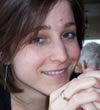Ever wonder where a street or town got its name? Marty McAllister did research on the subject. He found some very interesting stories.
If this were a word-association game, and I said “Nickel City”, how many of you would respond with “Sudbury!”? Not a bad answer, but it wouldn’t earn full marks, either.
If, on the other hand, your grandmother or great-grandmother said: “Summer picnic!”, I hope you didn’t laugh; she knows! For the secret behind her chuckle, and for a generous handful of other placename tidbits, let’s take an armchair tour of the territory in and around Sudbury, Ontario. Most of the places still exist on a modern map, but others have long since disappeared. Each one is worthy of a story in itself, but I’ve taken the liberty of expanding on just a few favourites of my own.
Azilda — community in the township of Rayside, by which name it was known for a time, but which was later re-named to honour Azilda Belanger (nee Brisbois), one of the first settlers. In 1973, with the advent of regional government, Azilda became part of the Town of Rayside-Balfour.
Balfour — township named after William Douglas Balfour, MPP for South Essex, Speaker of the Ontario Legislature from 1895-1897. See also “Rayside”.
Blezard — a township named after Thomas Blezard, federal MP for East Peterborough in 1883. Once an area rich in white pine, the rim of the “Blezard Valley” was the site of three notable discoveries in the 1880’s: the Blezard mine, the Stobie, and the Little Stobie. Today, of course, it is part of the town of Valley East.
Broder — township due south of Sudbury, surveyed in 1886, named after Alex Broder, M.P. for Dundas from 1875 to 1883, containing parts of Long and McFarlane Lakes.
Capreol — railroad town north of Sudbury, named after Frederick Chase Capreol, a Toronto railway promoter in the 1850’s.
Cartier — railroad town northwest of Levack, formerly known as Archer, later re-named after Sir George Etienne Cartier, one of the Fathers of Confederation.
Cascaden — containing part of Windy Lake and Ministic Lake, this township was named after Dr. John Cascaden, MPP for Elgin West from 1879 to 1883.
Chelmsford — located in Balfour Township, Azilda’s sister community in the new town of Rayside-Balfour, Chelmsford took its name from the Chelmsford in England.
Chicago Mine (also known as the Inez, or as the Travers) — located north of Worthington, in Drury Township, the mine was discovered in 1889, by Benjamin Boyer, for James B. Miller ofSault Ste. Marie. Later in his career, in 1898, the same Ben Boyer would discover the Helen iron mine at Wawa (see “Gertrude”). The Chicago was bought by The Drury Nickel Company in 1890; R.P. Travers of Chicago was the main shareholder, but the use of the name Inez remains a mystery. A smelter was built in `92, and the matte was transported seven miles to Worthington, on an overhead tramway.
Cinottiville — former village in NE corner of Waters Township, on what was then Highway 17 West, just past the Copper Refinery.
Got its name from its first settlers, the Cinotti family. Road relocations and industrial expansion eventually led to its dis-appearance in the 1960’s.
Coleman — a mine in the Levack area, originally known as the Big Levack, adjacent to the Strathcona property of our neighbours, the Falconbridge Nickel Company. It was discovered in 1889 by James Stobie. In April of 1960, the mine was re-named, to honour Dr. A.P. Coleman, an emminent turn-of-the-century geologist who made important contributions to the understanding of the geology of the Sudbury Basin.
Although there is no truth to the suggestion that Coleman Mine was named after Dr. Theobold Coleman, Canadian Copper’s first “company doctor”, his arrival in Copper Cliff in 1901 is certainly worth remembering.
Coniston — community in Neelon Township, now part of Nickel Centre, first settled in 1902, became site of the Mond Company’s new smelter in 1913. The name came from a novel that was set in the fictional town of Coniston.
Copper Cliff — name allegedly a derivative of the expression “cliffs of copper”, with which Rinaldo McConnell described our mineral-rich area to Samuel J. Ritchie, the Ohio promoter who founded the Canadian Copper Company. The site of numerous mining and smelting operations, Copper Cliff was first settled in 1886, became a town on April 15, 1901, and became part of the City of Sudbury in 1973.
Crean Hill — a mine discovered in 1885 by Francis Crean. It was sold to the Canadian Copper Co., but was not opened until 1905. The adjacent community by the same name rose and fell with the mine’s fortunes. The nearby open pit took its name from Crean’s wife, Ellen.
Creighton — a township, a mine (except that the mine’s mainly in Snider Township!), and a village, named after David Creighton, MPP for Grey North in the late 1800’s. Production began in 1901, continuing to this day. The last buildings in the community, however, were removed in 1988. In the northern part of the township, Colonel James R. Gordon founded the Creighton Gold Mining Comapny in 1889; it folded in 1893. Gordon Lake bears his name.
Denison — partitioned in 1884, the township was named after Colonel George Taylor Denison, police magistrate of Toronto from 1877 to 1923. A great deal of our area’s early prospecting was done in Denison, resulting in such finds as the Victoria, Crean Hill, Vermilion, Totten, and numerous others. Whitefish is its principal community.
Dill — a township, and the name of an early quartz quarry used by Canadian Copper, after J.W. Dill, MPP for Bracebridge in 1886.
Dogpatch (properly known as Rockville) — a community in Waters Township, between Lively and Creighton. Affectionate nickname borrowed from the fictional home of beloved comic characters Li’l Abner and Daisy Mae.
Dowling — a township, and a community now part of the Town of Onaping Falls, named after John F. Dowling, MPP for Renfrew South.
Drury — a township west of Sudbury, and an early mining company, both named after the Honourable E.C. (Charles) Drury, MPP for Simcoe County, and Ontario’s first Minister of Agriculture. An historic marker indicates his homestead on Highway 93 at Crown Hill, just outside Barrie.
Dryden — home of Stinson, Wahnapitae, two Ontario Hydro power plants (formerly owned by the Wahnapitae Power Company), and the ghost of the old Emery Lumber Company’s private railroad. This township was named after the Honourable John Dryden, MPP for Ontario South from 1879 to 1902.
Evans — originally known as the Eyre, this was one of the first Canadian Copper Company mines, re-named after J.D. Evans, its first chief engineer. It was located near today’s South Mine.
Fairbank — township, lake, named after J.H. Fairbank, MP for East Lambton.
Falconbridge — township, community, mine, company; formerly Timber Berth #48, re-named after William Glenholme Falconbridge, Justice of the Ontario High Court and Chief Justice of the King’s Bench from 1900 to 1920. The company was formed in 1928, successfully developing claims that had eluded numerous predecessors — not the least of whom was Thomas Alva Edison.
Frood — mine, village, open pit, Sudbury street, named after prospector Thomas Frood. It was the Frood orebody that played a major role in the Inco/Mond merger of 1929.
Garson — township, mine, community now part of the Town of Nickel Centre, named after William Garson, MPP for Lincoln. Note: watch for the local history of Garson, currently being developed by a committee of “native sons”.
Gatchell — western residential area of Sudbury, in McKim Township. A major portion of it was built on farmland subdivided by Moses Gatchell. This writer was born in Gatchell, on Copper Street, but not at number 444; that was the fictional address of Eden Crowell in the horror novel “Eden’s Eyes”. Local author Sean Costello has proven that a good yarn can be told in any setting; Sudbury readers of the horror genre should double their fun with this one!
Gertrude — an inactive mine, about two miles west of Creighton, discovered in 1892 by Wm. McVittie and George Jackson. It was bought in 1899 by The Lake Superior Power Company, a division of The Consolidated Lake Superior Company, the sprawling empire of Francis Hector Clergue, based in Sault Ste. Marie. Of course, there was no use buying a mine if you couldn’t get there, so Clergue built a railroad — The Manitoulin and North Shore, later to become the Algoma Eastern. He also bought the Elsie mine, over by Murray, serving it with a spur from his new railroad. Since Clergue never married, he named his mines after his three sisters: Gertrude, Elsie, and Helen. The latter is the name given to Algoma Steel’s great iron mine at Wawa.
Graham — township, location of Naughton, the old O’Donnell roastyards, and Nickel City (aha!), ; named after Peter Graham, MPP for East Lambton; long part of the United Townships of Drury, Denison and Graham, now part of the Town of Walden.
Hanmer — residential and agricultural township north of Blezard, named after Gilbert Hanmer, a farmer from Brant County.
Kirkwood — inactive Inco mine, named after T.M. Kirkwood, who in 1898 leased the property from McVittie and Jackson.
Lady MacDonald — name given to Canadian Copper’s #5 mine in 1886, in honour of the Prime Minister’s wife, on the occasion of their visit to Copper Cliff.
Levack — township and town now part of Onaping Falls, Inco mine, named after Mary Levack, maiden name of the mother of Sir Oliver Mowatt (1820 - 1903), Ontario Premier from 1872 - 1896.
Lively — town in Waters Township, now part of Walden, named after Charles Lively, well-known Creighton supervisor.
McCreedy West — mine formerly known as Levack West, re-named in 1980, in memory of late John McCreedy, former director and Vice-Chairman of Inco Limited.
McKim — township now part of City of Sudbury, site of Frood mine, and of the Falconbridge Nickel Company’s inactive McKim mine; named after Robert McKim, MPP for WellingtonNorth. Many township residents will remember when McKim had its own municipal government.
Mond — former village adjacent to the old Victoria Mine, named after Ludwig Mond, founder of the Mond Nickel Company.
Murray — site of the original discovery of sulphide ore along the main line of the new CPR, named after the Murray brothers who patented the claim. Went through various ownerships before becoming a successful Inco mine (see also Nickelton).
Neelon — heavily settled today, this was once just township #55, but was re-named after James Neelon of St. Catherines.
Nickel City — Here’s the real story! When Aeneas McCharles moved from the Soo in 1889, he first settled in Whitefish. Believing that western part of the Basin would see the district’s greatest growth, he registered the Nickel City subdivision in 1890 —- a plan complete with fifty-foot lots, streets, and parkland on “Vermillion Lake” (since there already was a Vermilion Lake, this one was re-named McCharles Lake) — about two miles east of Whitefish. When he died in 1906, he willed those park portions to the United Townships of Drury, Denison and Graham, stipulating that they were never to be sold. For many years, Nickel City was a favourite summer retreat; local news tidbits in the old Sudbury Journal often referred to an outing or a church picnic at Nickel City.
Nickelton — name given to the Murray site by the British America Nickel Company, after its acquisition in 1913 from the defunct Dominion Nickel-Copper Company (not to be confused with the Dominion Mineral Company).
North Star — discovered by Aeneas McCharles in 1898, sold in 1902 to Mond. Romantic that he was, McCharles likely chose the name because of the northerly route he had followed from the C.P.R.’s Algoma Branch to his find. His autobiography doesn’t confirm this, but it’s fun to speculate.
O’Donnell — home of the biggest and last of the Sudbury area roastyards. Located in Graham Township, west of Creighton and south of the Algoma Eastern line, the yard was established in 1915, complete with a townsite, and was named after John O’Donnell — who retired in 1922, but who outlived the roastyard by a long shot!
Onaping — a river, a Falconbridge mine, and a village that is now part of Onaping Falls. The name Onaping may be a contraction of the Cree word `Onumunaning’, meaning red paint or vermilion place. The Onaping River, of course, runs into the Vermilion, at which junction there was once a Hudson’s Bay Company post, surrounded by a large stand of white pine.
Rayside — a township, named after James Rayside, MPP for Glengarry, now combined with its sister township of Balfour to comprise the Town of Rayside-Balfour.
Ramsey — Sudbury’s beautiful lake, treasured from the very early days as a prestigious residential area, was named after William Allen Ramsey, survey party chief with the CPR. His boss, James Worthington, was so impressed with Ramsey’s good judgement in surveying the line north of the lake, instead of south as originally planned, named the lake in his honour (that’s almost as good as a raise!).
Snider — township that includes the Creighton mine on the west, and comes right up against Copper Cliff on the east, named after Elias W.O. Snider, former MPP for Waterloo North.
Stobie — long-producing mine in Blezard Township, named after James Stobie, who discovered it in 1885.
Strathcona — Falconbridge mine in the Levack-Onaping area, patented in 1890 by two employees of the Hudson’s Bay Company, and named in honour of Lord Strathcona, for many years the governor of that company.
Sudbury — main city of this area, named by James Worthington, CPR construction superintendent, after his wife’s birthplace: Sudbury, Suffolk, England.
Tam O’ Shanter — mining property in Snider Township, discovered in 1893 by Thomas Baycroft, a devoted Scot who took his mine’s name from Robert Burns’ poem “Tam O’ Shanter”.
Turbine — former village in the lower end of Drury Township, named after that marvelous device that converts water power to mechanical energy. In June of 1904, the Huronian Power Company (an Inco subsidiary) began construction on a private spur to its new hydroelectric plant at High Falls on the Spanish River. The spur connected with the C.P.R.’s Algoma Branch, and with the Algoma Eastern; the busy junction came to be known as Turbine.
Vermilion — a river, and the only successful gold mine of the area’s early ventures. The mine, a short ways west of the river, was discovered in 1887 by Henry Ranger; it operated independently for a while, but eventually became part of the Canadian Copper Co.
Victoria — the mine, originally discovered in 1886 by Henry Ranger, on behalf of Rinaldo McConnell, who gave it his own name. When it was sold to Ludwig Mond, the wealthy aristocrat re-named it the Victoria, after the still-reigning Queen. South of the mine, the Victoria smelter was built, next to which the village of Victoria Mines was built.
Wabageshik — a lake, and the site of the Wabageshik power plant on the Vermilion River, built by the Lorne Power Company, a Mond subsidiary, in 1908. The Ojibway name means clear or white sky. Although “Wab” is pretty far west, in Lorne Township, its long-standing importance to our industry earns it special mention. The same is true of Nairn, where the Mond company built its second power plant, in 1916.
Walden — the town was formed in 1973 with the coming of regional government, and the name is an acronym for Waters, Lively, and Denison.
Waters — a township, named after John Watters (one `t’ got lost), MPP for Middlesex West.
Whistle — mine north of Capreol, in Norman Township, discovered in 1897 by Isaac Whistle. Never too serious a threat, the first developers of the Whistle were nonetheless a thorn in Canadian Copper’s hide. Even then, it was a problem when a departing executive joined forces with a competitor.
Worthington — a mine, discovered in 1884 by Francis Crean. It was named after him for a time, then was re-named after James Worthington, the CPR construction superintendent. Nearby, a village of the same name developed. The mine was lost in a spectacular cave-in in October of 1927.
Editor’s Note: Sudbury historian Martin (Marty) McAllister died Sunday, July 24 in Barrie surrounded by his loving family. A funeral service will be held in Barrie this Thursday, July 28. McAllister was born in Sudbury and worked at Inco Ltd. for nearly 40 years. McAllister began writing a column for The Inco Triangle in 1989, and continued to write after he retired until 1995. For many years, he also posted articles to his website AtticDust.com.
He’s pet project was Bemocked of Destiny, Centenary Edition, which will be published shortly. The original Bemocked of Destiny was published in 1908 by mining prospector Aeneas McCharles. It is practically impossible to find the first edition. McAllister’s book will update the reader with a new introduction, photographs, maps, and other commentary about McCharles’ vision for the future.














Wow that was very interesting.